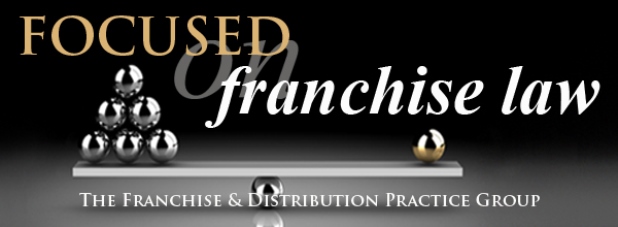Franchise 101: Recent “Franchisor as Joint Employer” Developments

bkurtz@lewitthackman.com
tgrinblat@lewitthackman.com
msoroky@lewitthackman.com
kwallman@lewitthackman.com
David Gurnick Quoted in Franchise Lawyer
“Everybody is aware how divided the Supreme Court is, with all sorts of 4-5 or now 4-4 decisions. This was a 9 to 0 decision that a forum selection clause in an agreement is enforceable.” Click to read: Ten Cases Rise to Top for Two Attorneys
FRANCHISOR 101:
Recent “Franchisor as Joint Employer” Developments

 In the last month, McDonald’s settled a class action with employees of a franchisee, and a new President of the United States was elected. These two events have something in common with regard to franchising: they are significant developments concerning the issues of franchisor liability for actions of franchisees, and joint franchisor-franchisee employment of workers at franchised locations.
In the last month, McDonald’s settled a class action with employees of a franchisee, and a new President of the United States was elected. These two events have something in common with regard to franchising: they are significant developments concerning the issues of franchisor liability for actions of franchisees, and joint franchisor-franchisee employment of workers at franchised locations.
The settlement was in the case of Ochoa v. McDonalds. A U.S. District Court in California certified a class of more than 800 current and former workers of a multi-unit McDonald’s franchisee in the San Francisco Area. They claimed damages for unpaid wages, unpaid overtime and time spent maintaining work uniforms. They sued their direct employer and also McDonald’s Corporation, claiming the franchisor was also their employer. The court ultimately ruled against McDonald’s in part, saying the claims might be valid if the workers truly thought they worked for McDonald’s Corporation. The workers alleged they applied for their jobs on McDonald’s website, wore McDonald’s uniforms, served McDonald’s food, worked at restaurants named McDonald’s and the McDonald’s name was on their paychecks.
Private claims like this received a boost in 2014 when the National Labor Relations Board (NLRB) alleged McDonald’s was a joint employer with its franchisees. In 2015 and 2016 numerous actions were brought in various franchise systems, claiming that franchisors, along with their franchisees, were joint employers of the workers. These claims were made in wide ranging industries, among them restaurants, lodging, convenience stores and fitness.
In the Ochoa case, rather than risk liability to the workers, McDonald’s settled for 3.75 million. In 2015, 7-Eleven similarly settled a joint employer liability claim brought by a 19-year sales associate of a New York 7-Eleven franchisee, although that settlement was for only $5,000, including attorneys’ fees. A U.S. District Court in New York approved the 7-Eleven settlement.
The NLRB claims against McDonald’s in 2014 were the result of the Board adopting a new definition of “joint employer,” after President Obama appointed a majority of the Board’s members. Under the prior standard, which had been in effect for over thirty years, joint employer status existed where two separate entities shared or co-determined matters governing the essential terms and conditions of employment. For a franchisor (or anyone) to be a joint employer, they had to exert “direct and immediate” control over employment actions like hiring, firing, discipline, supervision, and direction. The new standard is wider, broader and vaguer, assessing whether a claimed employer has sufficient control over employees’ essential terms and conditions of employment to permit meaningful bargaining. Words and phrases like “sufficient control,” allow this condition to be met by direct, indirect (through an intermediary) or even a reserved right of control, even if not actually exercised.
However, relief for franchisors may be coming. By law, the NLRB is headed by a five member board, appointed by the President. Currently the Board has two vacancies. It is possible the filling of vacancies by President Trump may change the political and philosophic makeup of the board, resulting in a return to the prior joint employer definition or something closer to it.
Regardless of the particular formulation of the joint employer standard, and other standards creating potential liability for acts of franchisees (actual agency, apparent agency, direct negligence, co-venture or joint venture liability and others), there are many steps franchise companies can take to reduce the risk of being held liable for acts or omissions of their franchisees. Earlier this year, we presented an extensive list of ways franchisors and franchisees should consider to prevent or reduce risk of co-employer liability claims. Given the recent developments, please revisit: 68 Steps to Reduce Risk of Joint Employer Liability.
